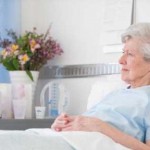 Gerodontology is a branch of dentistry that deals with the diagnosis, prevention and treatment of oral diseases. There are few problems which may affect the oral health status of the elderly:
Gerodontology is a branch of dentistry that deals with the diagnosis, prevention and treatment of oral diseases. There are few problems which may affect the oral health status of the elderly:
Age changes As we grow older, we experience changes such as decrease in cellular reproduction, tissue repair which can result in decreased function of our body systems.
Delivery of dental care Some elderly patients are housebound or bed ridden thus it can be difficult for them to visit their dental practitioner.
Disease and drug therapy Drug therapy can cause side effects to the oral cavity such as dry mouth condition.
Common dental problems in the elderly:
(1)Decrease ability to taste and enjoy food. Â Medications or certain systemic disease can also result in decrease in salivary flow rate.
2) Root caries occurred more frequently among the elderly patients. It can occur as a result of gingival recession. It has been reported that 88 percent of people 65 years of age and older have one or more sites with recession. The presence and extent of gingival recession also increased with age.
(3) Tooth wear. Tooth wear can be due to abrasion, erosion, parafunctional habits or due to excessive usage of certain teeth as a result of partial tooth loss.
(4) Periodontal problems are very common among the elderly patients. Most elderly patients have reduced manual dexterity and have difficulty in removing dental plaque.
(4) Increase in formation of secondary dentine and calcification of the dental pulp. (This can complicate root canal treatment procedure)
(5) Bone resorption increases with age and this can influence your denture stability.
Below are some tips on how to manage elderly patients
- If you are a dental practitioner, remember to check whether your patient is having any medical problems and consult their physician (if they have any) whether they are healthy to undergo any dental treatment. This can also prevent any medical emergencies from taking place in the dental practice.
2. Communication with an elderly patient can become difficult. Older patients might have poor eyesight, loss of hearing and lack of comprehension. Therefore, be patient and take some time while explaining any dental procedures to the elder patients.
 3.Electrical toothbrushes are beneficial for elderly patients who may not be able to maintain their oral hygiene due to lack of manual dexterity.(from stroke, arthritis) If they cannot afford an electrical toothbrush, you can teach them how to modify the handle of an ordinary toothbrush so that it will be easier for them to grip. (etc by placing bicycle handlebar grips on the toothbrush handle)
 4.Modify your dental practice to allow easy access for a wheelchair. (for example, sufficient space around the dental chair, car parks and toilets for the disabled)
 5.If your patient is diabetic, you should make sure that: The dental appointment is set during the early morning, patients are taking their medications and their meals before the dental appointment.
 6.Avoid rapid changes in the dental chair’s position. For example, from flat to upright. This can cause postural hypotension. Postural hypotension is drop of in blood pressure as a result of sudden change in body position.
 7.If you are unable to transfer your patient from his wheelchair to the dental chair, ask them to continue to sit in their wheelchair or place them on a straight backed chair placed against a wall with a cushion for additional head support.
 8.If you need to perform dental treatment on housebound or bedridden patients, bring portable units along with you and give good plaque removal instructions to the caretakers or relatives. It is important to prevent and maintain the oral hygiene of the remaining teeth. Chlorhexidine can be applied using cotton swabs to patients who are bedridden.
 Remember that maintaining optimum oral function is the main objective of treating an elderly patient. Whenever it is possible, remember to emphasize the importance of good hygiene on their teeth and gums.